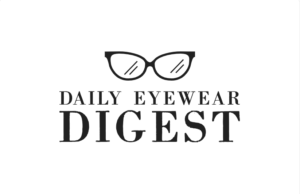The eyewear industry is going green in 2025—and packaging is leading the way. Once an overlooked detail, packaging is now a powerful tool for expressing sustainability, creativity, and brand identity. This year, eco-conscious designs are no longer optional—they’re expected. From reusable hard cases to packaging that can be planted and grown into flowers or herbs, brands are redefining how eyewear is presented and preserved.
Consumers today want more than stylish specs; they want ethical, environmentally friendly solutions from the brands they support. And that’s why the spotlight is on 2025’s eyewear packaging trends—where innovation meets intention.
Why Packaging Matters in the Eyewear Industry
Packaging is the first physical interaction a customer has with a product. In the eyewear world, this moment is crucial because:
- It reinforces brand values – A biodegradable case signals sustainability.
- It enhances customer experience – Unboxing well-designed packaging creates excitement.
- It influences repeat purchases – Memorable packaging builds brand loyalty.
More than just a container, packaging has become a critical element in storytelling and differentiation in a crowded market.
The Shift Toward Eco-Friendly Materials
Over the last decade, the packaging conversation has shifted from recyclability to sustainability at every stage. In 2025, eco-friendly materials dominate the eyewear space:
- Recycled kraft paper and cardboard: Strong, lightweight, and printable.
- Compostable bio-films: Replace plastic wraps with starch-based alternatives.
- Natural fibers: Hemp, cotton, jute, and bamboo offer aesthetic and eco appeal.
Brands now opt for materials that are renewable, biodegradable, and low-impact, aligning with both regulatory pressures and consumer values.
The Rise of Reusable Eyewear Packaging
Reusable packaging has evolved from a niche trend to a mainstream expectation. Brands are embracing:
- Zippered or magnetic closure pouches made from recycled PET or upcycled fabrics.
- Convertible cases that turn into display stands or storage containers.
- Stylish and durable materials like vegan leather, cork, or felt.
These designs reduce waste and increase usability, encouraging customers to repurpose rather than discard packaging.
Plantable Packaging: A Greener Future
One of the most exciting trends in 2025 is plantable packaging—a brilliant solution that leaves no waste behind.
How it works:
- The packaging is made from seed-infused biodegradable paper.
- After unboxing, users can tear and plant it in soil.
- With water and sunlight, it grows into flowers, herbs, or vegetables.
Brands like Pangea Eyewear and Seed Paper Studio are using this approach to deliver a message: sustainability can be beautiful and functional.
Key Features of 2025’s Packaging Innovations
Eyewear packaging in 2025 isn’t just sustainable—it’s smart, sleek, and surprising.
Smart & Functional Packaging Designs
Tech-savvy consumers appreciate packaging that’s not just pretty, but practical:
- Embedded QR codes for digital care instructions, warranty registration, and style tips.
- Moisture or temperature indicators for delicate lenses.
- Foldable or collapsible designs to reduce storage space and carbon footprint.
These features improve the customer journey while supporting sustainability goals.
Artistic & Customizable Elements
Eco doesn’t have to mean plain. Brands are finding creative ways to stand out:
- Custom prints and illustrations inspired by nature.
- Handwritten notes or eco-friendly ink messages inside boxes.
- Laser-cut logos on wooden or bamboo cases for premium lines.
Such personal touches elevate the unboxing experience and enhance brand storytelling.
Materials Dominating Eyewear Packaging in 2025
Let’s break down the sustainable materials taking center stage this year:
| Material | Benefits |
|---|---|
| Recycled Paperboard | Cost-effective, printable, and easily recyclable |
| Bamboo | Strong, renewable, and naturally stylish |
| Hemp | Low water usage, durable, and anti-bacterial |
| Seed Paper | 100% compostable and plantable for post-use engagement |
| Mycelium (mushroom) | Grown to shape, biodegradable, and shock-absorbent |
These materials aren’t just environmentally sound—they also offer excellent design flexibility.
The Decline of Plastic and Non-Renewables
As global regulations tighten and public awareness rises, plastic is rapidly falling out of favor. In 2025:
- More than 50 countries have restrictions on plastic packaging.
- Brands using plastic risk consumer backlash and poor brand perception.
- Compostable and recycled alternatives are now affordable and effective.
Choosing the right material is no longer just about cost—it’s about conscience.
Consumer Preferences and Market Trends
The new generation of buyers—particularly Millennials and Gen Z—are shaping the future of packaging:
- 81% prefer brands with sustainable packaging.
- Social media unboxing trends prioritize eco-friendly and aesthetic appeal.
- Customer reviews increasingly mention packaging experience.
Brands that understand these preferences win both attention and loyalty.
Unboxing Experience as a Brand Statement
In a TikTok and Instagram-driven market, unboxing has become an art form:
- Sustainable packaging increases shareability and visibility.
- A thoughtfully packed product feels more premium.
- The packaging becomes part of the brand’s emotional connection with the consumer.
Smart eyewear brands are leveraging this to boost both online presence and customer retention.
Brand Case Studies: Leaders in Green Eyewear Packaging
Several brands are leading by example:
- Warby Parker: Uses recyclable, minimal packaging and plant-based ink.
- Pela Vision: Offers fully compostable eyewear and packaging.
- Proof Eyewear: Crafts wooden boxes from FSC-certified materials.
These innovators show that eco-packaging isn’t just possible—it’s profitable.
Cost Implications and ROI of Sustainable Packaging
Yes, eco-packaging can be more expensive upfront. But in 2025:
- Bulk sourcing and supplier innovation have reduced costs.
- Brands report higher customer retention and brand loyalty.
- Sustainable packaging often doubles as free marketing, thanks to social sharing.
The return on investment isn’t just in dollars—it’s in impact, perception, and customer love.
Challenges in Scaling Plantable and Reusable Solutions
Going green isn’t without hurdles:
- Supply chain limitations for niche materials.
- Durability concerns for biodegradable elements.
- Consumer education needed to ensure proper use (e.g., planting seed paper).
However, these challenges are being addressed through innovation, partnerships, and clearer messaging.
Regulations & Certifications in Eco Packaging
Brands navigating sustainable packaging must also stay compliant. Key certifications include:
- FSC® (Forest Stewardship Council): Ensures responsible forestry.
- OK Compost/Home: Confirms compostability in home settings.
- USDA BioPreferred: Recognizes bio-based materials.
These logos aren’t just legal must-haves—they also boost consumer confidence.
How to Transition Your Eyewear Brand to Sustainable Packaging
Ready to go green? Here’s how:
- Audit your current packaging footprint.
- Source eco-friendly suppliers—preferably local or low-emission.
- Prototype creative solutions like foldable cases or plantable wraps.
- Educate your customers with labeling and digital content.
- Track impact via customer feedback and sustainability metrics.
The move pays off in both profit and purpose.
The Future of Eyewear Packaging Beyond 2025
Looking ahead, expect:
- Circular packaging systems with return-and-reuse models.
- AI-driven personalization for packaging and messages.
- Zero-waste partnerships between brands, suppliers, and logistics firms.
The possibilities are endless—and the momentum is growing.
FAQs on Eyewear Packaging Trends in 2025
Q1: What is plantable packaging?
A: It’s packaging made from seed-infused paper that can be planted and grown into plants.
Q2: Is sustainable packaging more expensive?
A: It can be, initially—but long-term savings and brand benefits often outweigh the cost.
Q3: Are reusable eyewear cases durable?
A: Yes, modern designs use strong materials like cork, recycled plastics, or hemp.
Q4: How can I tell if packaging is compostable?
A: Look for certifications like OK Compost or home compostable labels.
Q5: Do customers really care about eco-packaging?
A: Absolutely. Studies show a strong preference for sustainable products among younger buyers.
Q6: Can small eyewear brands afford eco-packaging?
A: Yes—many suppliers offer scalable, budget-friendly options tailored for startups.
Conclusion: Embracing a Sustainable Packaging Future
2025’s eyewear packaging trends prove that sustainability and style go hand in hand. From reusable to plantable, packaging is no longer waste—it’s a meaningful extension of your brand. Whether you’re an emerging startup or an established label, now is the time to rethink your packaging strategy and lead the charge toward a greener future.

